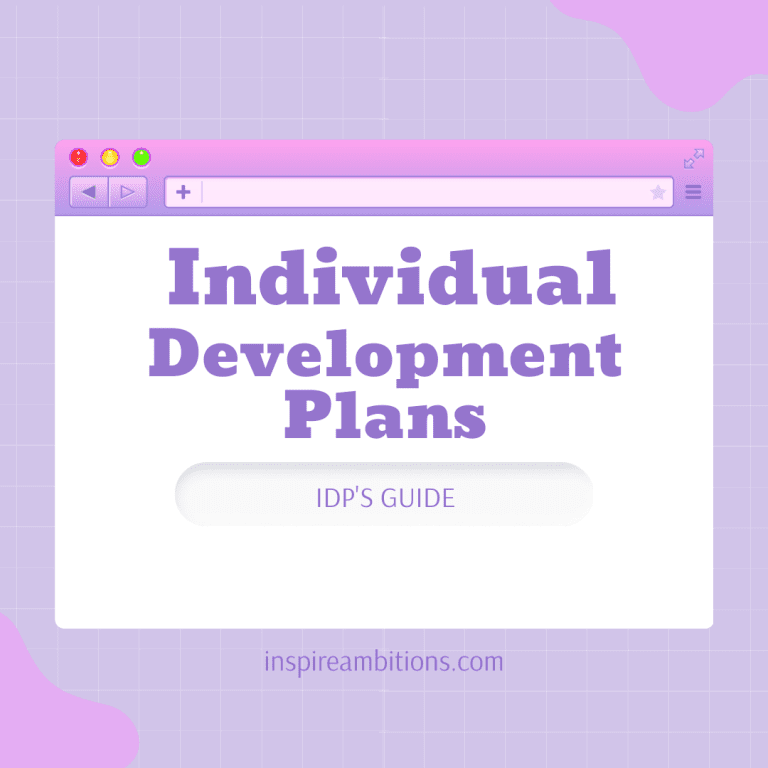Personal development plan nursing
The Importance of a Personal Development Plan in Nursing
In the ever-evolving world of healthcare, the role of a nurse is not just about providing care but also about embracing the journey of lifelong learning and personal growth. A personal development plan in nursing serves as a beacon, guiding nurses towards achieving their career aspirations and enhancing their professional capabilities. By setting clear nursing career goals, nurses can chart a course for success that aligns with both their personal ambitions and the needs of the healthcare sector to create a nursing professional development plan .
Career development in nursing is more than just climbing the professional ladder; it’s about becoming a more effective caregiver and leader. With a well-crafted personal development plan, nurses can identify areas for improvement, seek out opportunities for further education, and gain new skills that contribute to continuous improvement in healthcare. This proactive approach not only benefits individual nurses but also elevates the quality of care provided to patients.
Professional growth for nurses is essential in adapting to new challenges and innovations within healthcare. By committing to ongoing learning and self-improvement, nurses inspire those around them—colleagues and patients alike—demonstrating that dedication to one’s craft can lead to remarkable outcomes both professionally and personally. So embrace your potential, set your sights high with your personal development plan, and watch as your nursing career flourishes into something truly extraordinary.
Steps to Creating an Effective Personal Development Plan
Creating an effective personal development plan is a transformative journey that allows nurses to not only enhance their professional skills but also nurture their personal growth. To embark on this path, begin by exploring a nursing personal development plan template. This serves as a foundation, guiding you through the essential components of your plan.
When considering how to write a personal development plan for nurses, start by reflecting on your current skills and aspirations. Identify areas where you wish to grow and set realistic nursing goals that challenge yet motivate you. Remember, these goals should be specific, measurable, achievable, relevant, and time-bound—ensuring clarity and focus in your developmental journey.
Incorporate personal growth strategies for healthcare professionals into your plan. This might include seeking mentorship opportunities, engaging in continuous education courses, or dedicating time for self-care practices that support mental well-being. Each step taken is an investment in your future—a commitment to becoming the best version of yourself both professionally and personally.
By following these steps with determination and passion, you’ll craft a roadmap that not only elevates your career but also enriches every aspect of your life as a dedicated healthcare professional.
Identifying Skills and Competencies for Professional Growth
Embarking on a journey of professional growth in nursing is both a rewarding and transformative experience. It begins with the vital step of identifying your skills and competencies, which serve as the foundation for your development. Nursing skills enhancement is not just about acquiring new knowledge; it’s about refining existing abilities to provide the best possible care.
To truly excel, you must first conduct a thorough skill assessment for nurses, evaluating both your strengths and areas that require improvement. This introspective process allows you to tailor your learning path effectively. Consider creating a professional competencies checklist—this will guide you in tracking progress and ensuring no aspect of your practice is overlooked.
Competencies in nursing practice are diverse, ranging from clinical proficiency to communication and leadership skills. Each competency contributes uniquely to patient care and team dynamics. By focusing on these areas, you can elevate your practice, inspire those around you, and ultimately make a profound impact within the healthcare community.
Remember, every step taken towards enhancing your competencies is an investment not only in yourself but also in the countless lives you’ll touch throughout your career. Embrace this journey with enthusiasm and confidence, knowing that each skill honed brings you closer to becoming an exemplary nurse leader.
Setting Achievable Goals and Milestones
Setting achievable goals and milestones is a transformative journey, especially in the dynamic field of nursing. It’s about envisioning where you want your career to go and crafting a path that leads you there. Goal setting in nursing careers isn’t just about reaching the next rung on the ladder; it’s about personal growth, professional development, and ultimately providing better care for patients.
One effective method for nurses is to embrace SMART goals—Specific, Measurable, Achievable, Relevant, and Time-bound objectives. This approach ensures clarity and focus while allowing you to track your progress meaningfully. For instance, rather than simply aspiring to “improve patient care,” a SMART goal might be “complete an advanced certification in patient care by the end of the year.” This not only specifies what needs to be done but also sets a realistic timeframe for achievement.
Creating milestones within your personal development plan can act as stepping stones on your journey. These milestones serve as checkpoints that keep you motivated and allow for adjustments when necessary. Whether it’s mastering a new skill or taking on leadership responsibilities within your unit, each milestone represents progress towards your larger career aspirations.
Remember, every nurse’s path is unique; what matters most is aligning your goals with both personal ambitions and professional demands. By thoughtfully setting goals and establishing meaningful milestones, you’re not just advancing in your career—you’re shaping a future filled with purpose and fulfillment.
The journey to success in nursing is often paved with challenges, but it’s through navigating these obstacles that true growth and resilience are forged. As a nurse, overcoming challenges is not just part of the job; it’s an integral aspect of the career that shapes you into a more compassionate and effective caregiver.
One key strategy in building resilience within your nursing career is to embrace each challenge as an opportunity for learning and development. Whether it’s handling setbacks effectively or finding innovative solutions to complex problems, every experience contributes to your personal and professional growth. It’s important to remember that setbacks are not failures, but rather stepping stones towards achieving greater competence and confidence.
To bolster your resilience, connect with mentors and colleagues who can provide support and guidance. Sharing experiences with others who understand the unique pressures of nursing can offer new perspectives and coping mechanisms that you might not have considered on your own.
Finally, never underestimate the power of self-care in maintaining your strength. Taking time for yourself ensures you remain physically and emotionally equipped to face whatever comes your way. By nurturing both body and mind, you’ll be better prepared to tackle challenges head-on while inspiring those around you with your unwavering commitment to providing exceptional care.
In essence, each challenge faced as a nurse enriches your journey, turning obstacles into opportunities for triumph on the path to success.
the Role of Mentorship and Networking in Nursing Development Plans
In the ever-evolving field of nursing, the journey to professional growth is greatly enriched by the power of mentorship and networking. The importance of mentorship in nursing cannot be overstated; it serves as a beacon of guidance and wisdom for those navigating their careers. A mentor provides invaluable insights, shares experiences, and offers encouragement, helping nurses to build confidence and develop their skills.
Building a supportive network as a nurse is equally crucial. Networking opens doors to new opportunities, fosters collaboration, and creates a community where knowledge is shared freely. It allows nurses to connect with peers across various specialities, broadening their perspectives and enhancing their practice.
Finding mentors within healthcare professions can transform one’s career path. These seasoned professionals not only offer advice but also inspire by exemplifying excellence in practice. By seeking out mentors who resonate with your aspirations, you gain access to a wealth of experience that can guide you through challenges and celebrate your successes.
Embrace the role of mentorship and networking in your nursing development plan; they are powerful tools that will propel you towards achieving your fullest potential in this noble profession.
Your Future Self: Visualising Success Through Personal Development Planning
Embarking on a journey of personal development is akin to planting seeds for your future success. By employing visualisation techniques for career success, you can transform abstract dreams into tangible goals. Imagine yourself thriving in your chosen field, whether you’re a nurse envisioning the next step in your career or someone seeking growth in another profession. Visualisation isn’t just about daydreaming; it’s about creating a vivid mental image of where you want to be and mapping out how to get there.
Future planning for nurses’ careers, for instance, involves more than just acquiring new skills or certifications. It requires seeing yourself in various roles and settings—perhaps leading a team, specialising in a particular area, or even advancing into healthcare management. Envisioning your growth journey allows you to identify the steps necessary to reach those milestones and motivates you to take action.
By regularly practising these visualisation techniques, you’ll find that the path forward becomes clearer and more achievable. Your aspirations will no longer seem like distant possibilities but rather imminent realities waiting for you to seize them. So take a moment each day to close your eyes and picture your future self—successful, fulfilled, and proud of the journey you’ve undertaken—and let that vision guide every decision you make today.
Embrace Your Journey of Growth with a Personal Development Plan Today!
Embarking on the journey of personal growth is one of the most empowering decisions you can make. Crafting a Personal Development Plan (PDP) is like charting a map for your future, guiding you towards the best version of yourself. Imagine waking up every day with a clear sense of direction and purpose, knowing that each step you take brings you closer to your dreams.
A Personal and professional development plan encourages you to reflect on where you’ve been and where you’re going, allowing for introspection and clarity. It’s about setting realistic goals that align with your passions and values, fostering a mindset geared towards continuous improvement. Whether you’re looking to enhance your skills, boost your confidence, or explore new horizons, this plan acts as both compass and companion.
As you embark on this journey, remember that growth isn’t always linear; it’s an adventure filled with learning curves and triumphs alike. Embrace each moment with enthusiasm and resilience. Let your PDP be a living document—one that evolves as you do—celebrating milestones along the way.
So why wait? Start crafting your Personal Development Plan today and watch as it transforms not just what you achieve but who you become in the process. The future is yours to create!







